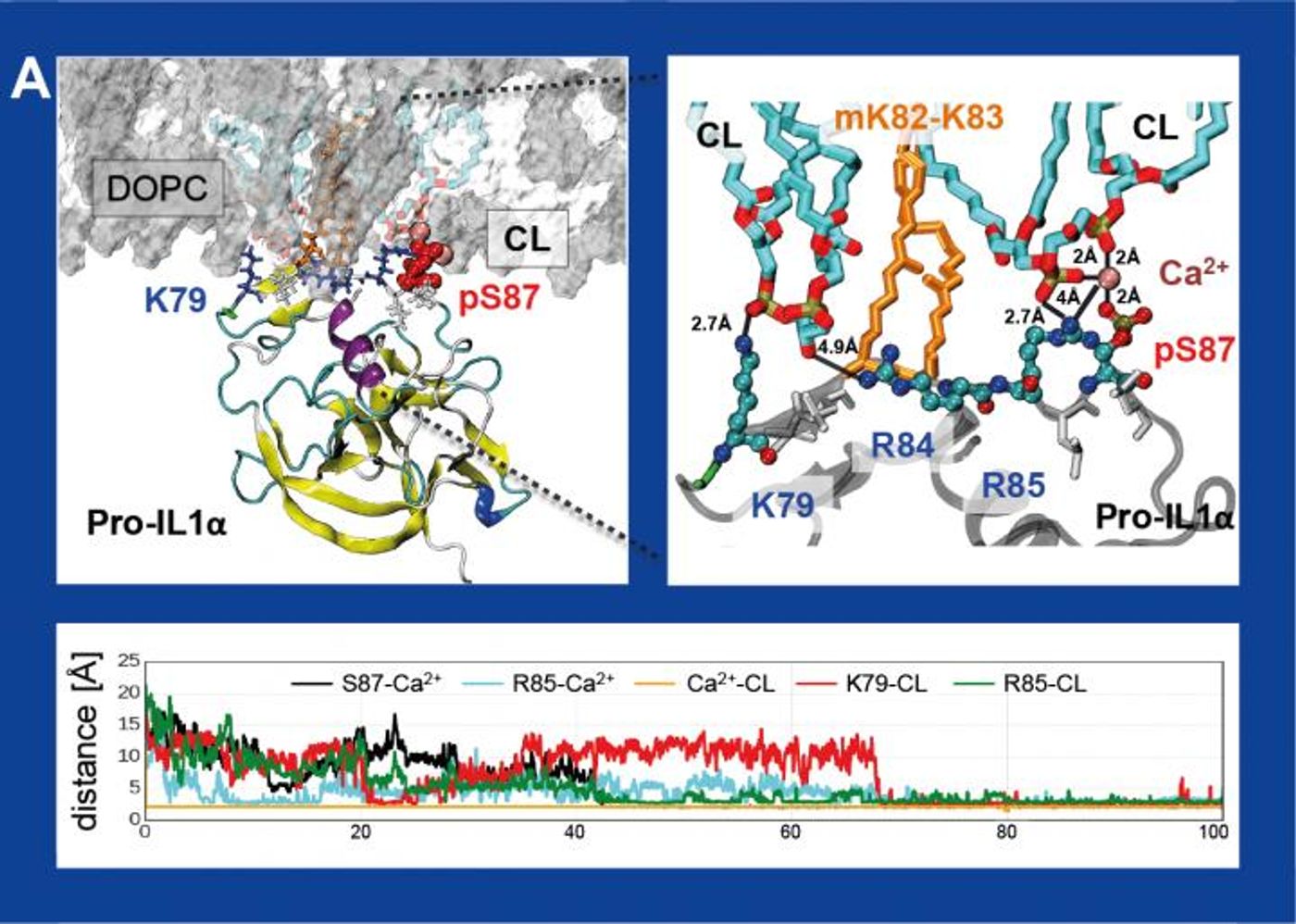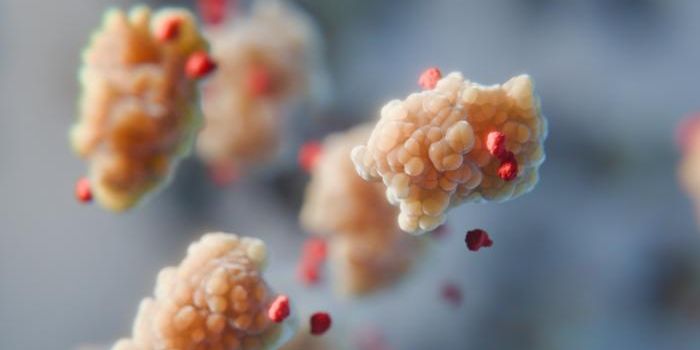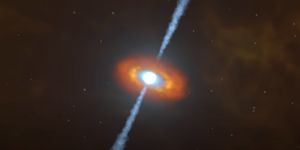Similarities Between Two Proteins May Impair One's Activity
Cytokines are a group of molecules that are involved in varioous biological processes including cell signaling and inflammation, a term that describes the body’s response to injury, infections, or toxins. We know that some cytokines called interleukins are crucial for inflammatory pathways. Scientists have now learned more about how one type of interleukin interacts with a complex called the inflammasome, which is activated when the cell is under threat.
One of the research leaders, Dr. Karolina Mikulska-Ruminska of the Department of Biophysics at Nicolaus Copernicus University explained the work, which has been reported in the Proceedings of the National Academy of Sciences and is outlined in the subtitled video.
“One of the main objectives of our research was to define what role is played by the protein prointerleukin-1 alpha (pro-IL-1α). It is known that the mature form of this pro-inflammatory cytokine (IL-1α) is responsible for the formation of inflammatory states, fever and sepsis. It was a huge discovery to find out that the same protein in an inactive form of precursor (pro-IL-1α) plays such a key role in regulating the response of the immune system,” said Mikulska-Ruminska.
“At this point, it is necessary to mention the inflammasome NLRP3. This is a structure within a cell which consists of many specialized proteins. In a healthy cell it remains inactive. It becomes activated when the organism is endangered with, for instance, the presence of microorganisms or cells which appeared due to the damage of tissues, and metabolic disorders,” Mikulska-Ruminska noted.
Two interleukins, IL-1β and IL-18 are converted into their active forms by the active NLRP3 inflammasome, which triggers inflammation. While inflammation is necessary for healing, if it’s not carefully controlled it can end up contributing to the damage and making things worse for an organism.
“Obviously, there is quite a numerous group of inflammations which are necessary for the organisms, for instance to eliminate bacteria or viruses. A chronic state, however, leads to many dangerous diseases. The best example of this is so-called cytokine storm, which is hyper-reaction of the immune system, which is a serious problem in the most serious cases of COVID-19, which medical doctors are fighting against at the moment,” explained Mikulska-Ruminska. “Hyperactivity of NLRP3 triggers off numerous pathological conditions, including atherosclerosis, arthritis, inflammatory bowel disease, or type 2 diabetes.”
Chronic inflammation has been called the father of disease, and it’s been linked to neurodegenerative disorders like Alzheimer’s. There is evidence that the pathophyisology of Alzheimer’s is related to the NLRP3 inflammasome.
“Our research reveals the mechanism due to which cells modulate the activation of NLRP3 inflammasome. This is very crucial as it is connected with the possible therapeutic application, for example while treating the above-mentioned diseases,” said Mikulska-Ruminska.
“Shortly speaking, we have found that the cells which lack pro-IL-1α are characterized by a decreased activity of NLRP3 inflammasome and caspase-1 (an element of the inflammasome which activates cytokines). This leads to a lesser release of IL-1β and decreased damage of mitochondria. The role of pro-IL-1α is therefore extremely important; it regulates the activation of the inflammasome, and thus is a key protein to initiate an inflammatory state.”
In this work, the researchers also determined that IL-1α is similar to another molecule called LC3b, which can eliminate dead and damaged cells.
“We have shown that pro-IL-1α interacts in the mitochondrial membrane with cardiolipin. Cardiolipin is an important phospholipid which normally binds with another protein - LC3b and, at the same time, sends a signal 'eat me' to eliminate cells,” explained Mikulska-Ruminska.
If these proteins are in competition, it may have negative consequences for the cell, she added; if pro-IL-1α prevents LC3b from accomplishing its task, damaged cells may begin to accumulate.
Sources: AAAS/Eurekalert! via Nicolaus Copernicus University, Proceedings of the National Academy of Sciences










